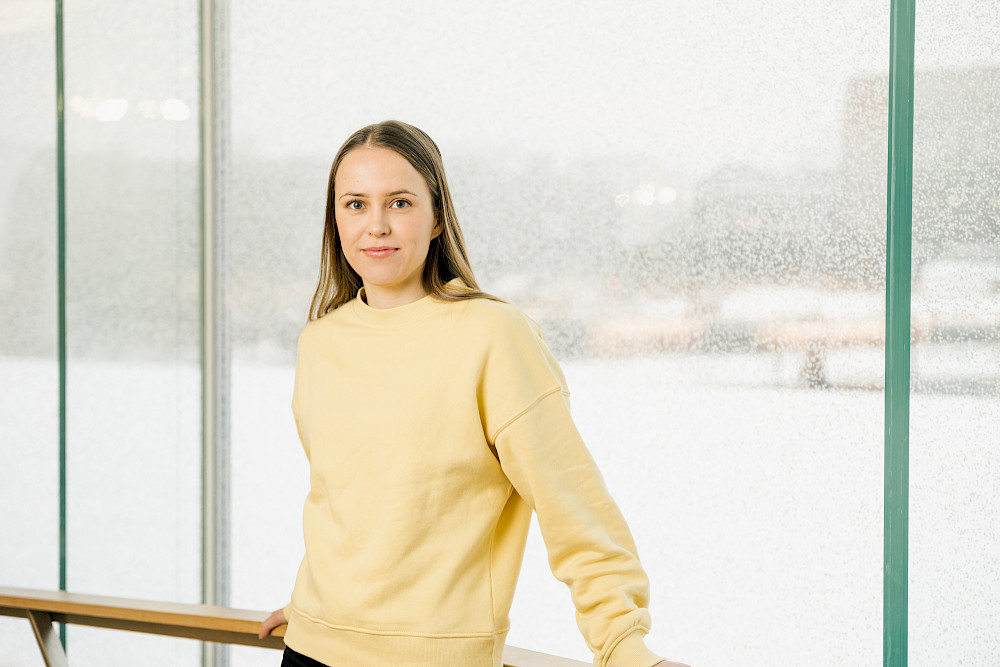Higher Education on the Move supports long-lasting and overall well-being
How does the activities of Universities on the Move manifest in the everyday life of students and why should the programme's funding be continued? Special Advisor for University Sport Anni Liina Ikonen writes in the second part of the Finnish Student Sports Federation's election blog series about the importance of the Universities on the Move programme.

“This is utterly numbing!”, Atte from Kerava exclaimed during his first year at university in 2019. Judo had been a life-long hobby for Atte, who had started his business studies at a university of applied sciences earlier that autumn. He had quickly realised that studying meant an awful lot of sitting. He had left his old hobby in his home town, and hadn’t managed to find anything to replace it with. Not that he had the time for hobbies, anyway. His studies were eating into his free time, and he had to work as well.
While at vocational school, Atte had good used to the Liikkuva amis programme. Studies in the classroom included movement, and taking exercise breaks was a daily habit. The contrast felt huge when he arrived at university, and fitting in exercise became really difficult.
Only 46 percent of students exercise enough in terms of their health, and they sit on average for 11 hours every day.
Modern university culture and university facilities have made physical passivity the norm: students are slumped in their auditorium seats all day long, and the threshold for exercising in their free time is high. This can be seen in the most recent health survey for higher education students (THL 2021): only 46 percent of students exercise enough in terms of their health, and they sit on average for 11 hours every day.
It is clear as day that society must invest significantly more in the wellbeing of students. Research has proven that without physical activity, there’s no point in even dreaming of wellbeing or ability to work.
Meanwhile the news is howling about the unprecedented mental health crisis that young people are facing, and the decision-makers are starting to panic about whether enough people will be fit to work in the future. It is clear as day that society must invest significantly more in the wellbeing of students. Research has proven that without physical activity, there’s no point in even dreaming of wellbeing or ability to work. In addition to research data, the wishes of Atte and his fellow students also support improved exercise opportunities. The most recent Student Barometer (Otus 2022) shows that in terms of the promotion of exercise, university students particularly want teaching practices and facilities which promote physical activity, such as height-adjustable desks and a gym.
And the students are not alone in this. The remote learning, which started in the spring of 2020 as a result of the pandemic, also made teachers realise how important movement is to learning and wellbeing. Some of them contacted the Finnish Student Sports Federation on behalf of their profession and asked for advice on how to make their teaching more active. The teachers had realised what research had already proved: that a little bit of movement improves students’ concentration. This collaboration led to the creation of the Movement drives Achy away video, which summarises the best ways to include physical activity in teaching.
In addition to adding physical activity to the teaching, universities have also taken many other steps towards promoting physical activity recently:
- Outdoor gyms have been built on campuses.
- Exercise break stations have been created in corridors.
- Electric desks and activating seats have been added to study spaces.
- Staff members have been hired to organise university sports services.
- Slides encouraging physical activity have been added to lecture slide shows.
- Student unions and university sports services have recruited sports tutors to organise exercise activities for their peers that students are interested in.
The universities and the Finnish Student Sports Federation have been collaborating successfully on the Universities on the Move project. Atte has also noticed a change. These days, a normal Tuesday morning starts with an open ball game session. Feeling alert, Atte then heads to his lecture, where sports tutors turn up halfway through to get everybody moving. In the afternoon he still has enough energy to go and do a shift at his job, and Atte no longer needs to worry about when he will get time to exercise.
The Universities on the Move programme, which is carried out by OLL and the universities, has been funded with a national project grant for an active lifestyle, which is awarded by the Ministry of Education and Culture as part of the Studies on the Move programme. This funding is also extremely important going forward. Even though the exercise opportunities have improved in the last few years and an increasing number of students is exercising more, there are still more than 150,000 students who don’t exercise enough in terms of their health.
This is why one of OLL's goals in the parliamentary election is that the successful Universities on the Move programme is continued with public funding. The day will soon come when Atte and his colleagues head out into the world of work. The future Members of Parliament can have an impact on how able these young people are to work when they take this step.
The article is part of the blog series Worth moving for, where we explain the background to the Finnish Student Sports Federation’s goals for the parliamentary election.
Part 1: Student sports must be taken into account in university funding
Part 2: Higher Education on the Move supports long-lasting and overall well-being
Part 3: We will include students in the promotion of exercise
You may also be interested in
-
We will include students in the promotion of exercise
Published:The problems of students are hidden beneath the coping narrative, and the cause is their youth, writes Niko Peltokangas, Secretary General of OLL. During the parliamentary election, the Federation is campaigning to see students identified as a separate group in the legislation for exercise promotion.
Read more about article: We will include students in the promotion of exercise
-
Unohtakaa lapset, pelastakaa aikuiset!
Published:Tuleeko sinulle mieleen aihetta joka kerää yhtä varauksettoman kannatuksen läpi puoluekentän kuin liikkumisen lisäämisen suomalaisten arkeen?
Read more about article: Unohtakaa lapset, pelastakaa aikuiset!
-
Student sports must be taken into account in university funding
Published:Korkeakouluopiskelijoiden hyvinvointi on viime vuosina kriisiytynyt, minkä vuoksi korkeakoulujen liikunnan rahoitukseen tulisi panostaa enemmän, kirjoittaa Opiskelijoiden Liikuntaliiton puheenjohtaja Emilia Junnila. Suurempien kriisien ja liikkumattomuuden kustannusten ehkäisemiseksi tulee panostukset tehdä nyt.
Read more about article: Student sports must be taken into account in university funding
Share this page
Page last updated 3.4.2023
